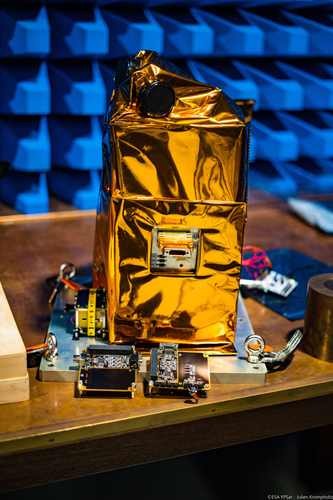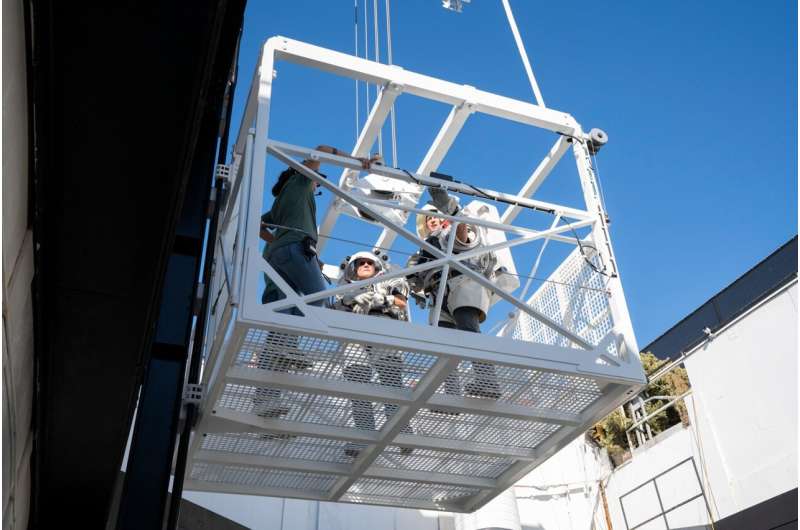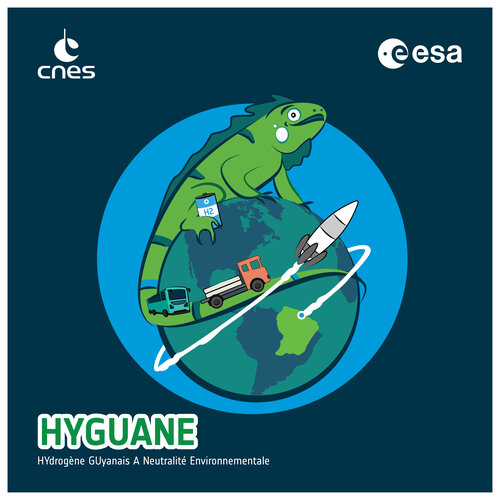
Copernical Team
MSBAI and Princeton partner in SpaceWERX contract to enhance space flight training
 MSBAI in collaboration with Princeton University, has been awarded a significant contract valued at $1.25 million from SpaceWERX. This Phase 2 contract, part of the Small Business Technology Transfer (STTR) X22.D cycle, aims to revolutionize the process of space flight mission training through the introduction of GURU, a highly autonomous system designed to streamline expert workflows in softwar
MSBAI in collaboration with Princeton University, has been awarded a significant contract valued at $1.25 million from SpaceWERX. This Phase 2 contract, part of the Small Business Technology Transfer (STTR) X22.D cycle, aims to revolutionize the process of space flight mission training through the introduction of GURU, a highly autonomous system designed to streamline expert workflows in softwar ESA Partners with GMV for Advanced Greek Space Debris Tracking Radar
 The European Space Agency (ESA) has recently taken a significant step in enhancing its space situational awareness capabilities by awarding a contract for the Greek Space Debris Tracking Radar (HSTR). This project, led by a consortium headed by Spanish company TTI Norte and including GMV, is set to play a pivotal role in monitoring the increasingly congested Low Earth Orbit (LEO) region.
H
The European Space Agency (ESA) has recently taken a significant step in enhancing its space situational awareness capabilities by awarding a contract for the Greek Space Debris Tracking Radar (HSTR). This project, led by a consortium headed by Spanish company TTI Norte and including GMV, is set to play a pivotal role in monitoring the increasingly congested Low Earth Orbit (LEO) region.
H ESA and IENAI Space unveil innovative electrospray propulsion for small satellites
 In a significant advancement for small satellite propulsion, the European Space Agency (ESA) and IENAI Space, a Spain-based technology firm, have introduced an innovative electrospray propulsion system known as ATHENA (Adaptable THruster based on Electrospray powered by Nanotechnology). This pioneering technology, designed to enhance the maneuverability and longevity of CubeSats and similar smal
In a significant advancement for small satellite propulsion, the European Space Agency (ESA) and IENAI Space, a Spain-based technology firm, have introduced an innovative electrospray propulsion system known as ATHENA (Adaptable THruster based on Electrospray powered by Nanotechnology). This pioneering technology, designed to enhance the maneuverability and longevity of CubeSats and similar smal Helicity Space plants a seed for fusion propulsion technology - can it work?
 Helicity Space, a name that's beginning to resonate in the commercial space industry, recently heralded a significant advance in its quest to redefine space propulsion. The company has successfully secured a $5 million seed funding round, a move that not only underscores the industry's confidence in fusion technology but also marks a pivotal moment in space travel innovation.
This round of
Helicity Space, a name that's beginning to resonate in the commercial space industry, recently heralded a significant advance in its quest to redefine space propulsion. The company has successfully secured a $5 million seed funding round, a move that not only underscores the industry's confidence in fusion technology but also marks a pivotal moment in space travel innovation.
This round of Year in images 2023

Year in images 2023
Our year through the lens: a selection of our favourite images for 2023
Gift wrapped for Ariane 6
 Image:
Gift wrapped for Ariane 6
Image:
Gift wrapped for Ariane 6 NASA astronauts test SpaceX elevator concept for Artemis lunar lander

NASA astronauts Nicole Mann and Doug "Wheels" Wheelock participated in a recent test of a sub-scale mockup elevator for SpaceX's Starship human landing system that will be used for NASA's Artemis III and IV missions to the moon. The Starship human landing system will carry two astronauts from the Orion spacecraft in lunar orbit to the surface, serve as a habitat for crew members' approximately one week stay on the moon, and transfer them from the surface back to Orion.
The elevator will transport equipment and crew between Starship's habitable area, located near the top of the lander, and the lunar surface, as they exit for moonwalks. The test allowed the astronauts to interact with a flight-like design of the elevator system, serving as both a functional demonstration of the hardware and providing the chance to receive valuable feedback from a crew perspective.
Built at SpaceX's facility in Hawthorne, California, the elevator mockup has a full-scale basket section with functioning mechanical assemblies and crew interfaces for testing. During the demonstration, NASA astronauts wore spacesuits that simulate the suit size and mobility constraints that crew will face on the moon.
Cosmic Bling: The Science of Extraterrestrial Diamonds
 Diamonds have long captivated humanity with their brilliance and rarity, symbolizing wealth, power, and romance on Earth. However, beyond our planet, in the vast expanse of space, diamonds take on a new role, offering clues to the mysteries of the cosmos. This article delves into the fascinating world of extraterrestrial diamonds, exploring their formation, discovery and the profound implications they hold for our understanding of the universe.
Diamonds have long captivated humanity with their brilliance and rarity, symbolizing wealth, power, and romance on Earth. However, beyond our planet, in the vast expanse of space, diamonds take on a new role, offering clues to the mysteries of the cosmos. This article delves into the fascinating world of extraterrestrial diamonds, exploring their formation, discovery and the profound implications they hold for our understanding of the universe. Image: Pinhole propulsion for satellites

A palm-sized propulsion option for future space missions: Each one of these seven emitter arrays etched onto this silicon wafer using micro- and nano-technology possesses more than 500 pinhole-sized emitters that spray out ions, accelerated via an electrostatic field to maximize thrust.
Inherently scalable, this "electrospray" technology is being developed as a cost- and mass-effective method of propelling CubeSats and other small satellites. For the first time in Europe, this ionic-liquid based electrospray propulsion system has achieved more than 400 hours of continuous operation.
"Everyone knows that 'space is hard,' but we like to say that 'propulsion is harder,'" comments Daniel Pérez Grande, CEO & Co-founder of IENAI Space in Spain, who is developing the technology for ESA. "Developing a new technology, which we have built from scratch, has been no easy feat, but we are confident that our propulsion products will stand out in the market for their incredible performance and customization capabilities; and in fact we have already been approached by a number of interested parties in the industry."
Known as ATHENA (Adaptable THruster based on Electrospray powered by Nanotechnology), this system is one of three currently being developed by ESA to harness electrospray propulsion for space.
Hyguane: green hydrogen for Ariane 6, Europe's Spaceport and more
 Image:
Image:
The start of a more sustainable production facility to create hydrogen fuel for Ariane 6 – Europe’s new heavy-lift rocket – is underway.
Project HYGUANE – a portmanteau of the French words for hydrogen, French Guiana and the local Iguanas – is a €40.5M investment in a solar farm and distribution systems, being designed to be allowed to easily expand in the future.

